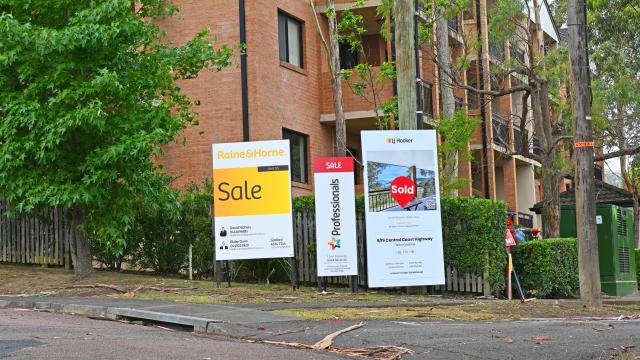As we all know by now, housing in Australia is pretty dire at the moment. Whether you’re a renter or a homeowner, the combination of rising interest rates, increasing cost of living and low vacancy rates means that things are bleak – and unjustifiably expensive.
The latest update in this space is that property data and analytics provider, CoreLogic, has released some new research on the state of the property market and, well… it offered some interesting findings. We took a look through and pulled out the points we thought were most compelling.
To manage your expectations, there was a fair bit of depressing news to come out of this research. But there were a handful of capital cities that recorded positive results, so we will take those wins where we can.
Australian housing report: The biggest takeaways
The median value of properties went up in March
Per CoreLogic’s national Home Value Index (HVI) for March, property values are up 0.6 per cent. This has not happened since April 2022.
CoreLogic shared data that showed housing values climbed in NSW, VIC, QLD and WA, with the largest jump coming from NSW – unsurprisingly – at 1.4 per cent. This, the report highlighted, is “fueled by the top end of the market” in Sydney.
“Although interest rates are high and there is an expectation the economy will slow through the year, it’s clear other factors are now placing upwards pressure on home prices,” Research Director, Tim Lawless said of the findings.
“Advertised supply has been below average since September last year, with capital city listing numbers ending March almost -20% below the previous five-year average. Purchasing activity has also fallen but not as much as available supply; capital city sales activity was estimated to be roughly -7% below the previous five-year average through the March quarter.
“With rental markets this tight, it’s likely we are seeing some spillover from renting into purchasing, although, with mortgage rates so high, not everyone who wants to buy will be able to qualify for a loan. Similarly, with net overseas migration at record levels and rising, there is a chance more permanent or long-term migrants who can afford to, will skip the rental phase and fast track a home purchase simply because they can’t find rental accommodation.”
While the median housing prices rose in Australia, there were drops in value for some capital cities. Hobart was down 0.9 per cent, followed by Canberra (-0.5%), Darwin (-0.4%) and Adelaide (-0.1%).
Rental vacancy rates remain low, while prices are high
Surprising no one, CoreLogic also shared that its research indicates vacancy rates in rental properties are as low as ever.
When it comes to the cost of rent, the report showed that prices have increased annually across houses and units in every case save for houses in Canberra which are down 0.8 per cent.
The highest annual change in rent costs was seen in Sydney units (up 18.1 per cent), followed by Brisbane and Melbourne units at 16.1 per cent and 14. 6 per cent higher.
CoreLogic shared that it appears folks who may have moved into larger homes during the earlier stages of the pandemic are now being forced into smaller dwellings, with some needing to consider group housing arrangements to save money.
The report reads:
Capital city house rents are up 24.8% since the onset of the pandemic in March 2020, while unit rents are up a smaller 19.5%, although they are quickly catching up.
One small win is that in Darwin and the ACT, the March quarter showed rental rates fell somewhat. According to the report, this was true of Darwin houses (-1.5%) and units (-0.4%) as well as ACT houses (-1.3%).
Inflation may be slowing
In better news, the report shared that ‘inflation winding down’ could be a positive factor for Aussies to consider.
“The monthly inflation indicator has lost a lot of momentum over the first two months of the year, dragging the annual headline reading lower, from 8.4% in December to 6.8% in February,” the report read.
“…There is still a long way to go before inflation drops into the target range of 2-3%, however the lower than expected outcome could support a decision from the RBA to either pause or halt the rate hiking cycle.”
You can check out the report in full here if you’d like to learn more.

Leave a Reply
You must be logged in to post a comment.